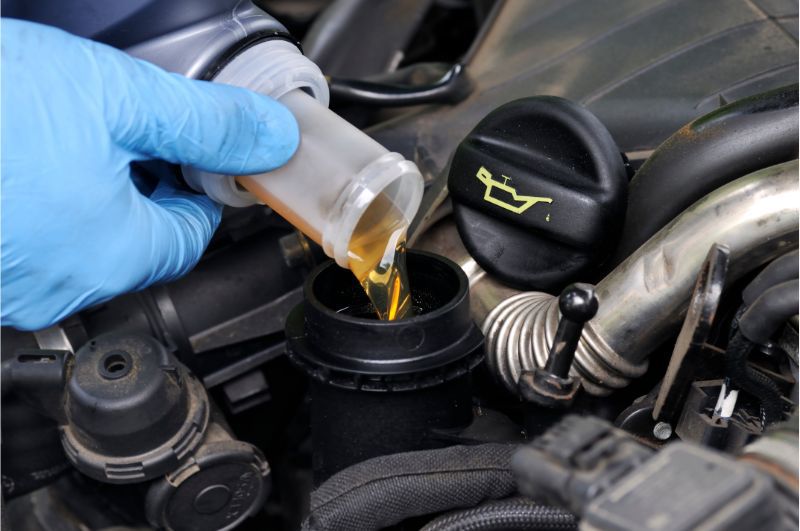Thanks for your support! If you make a purchase using our links in this article, we may make a commission. And, as an Amazon Associate, I earn from qualifying purchases. See the full disclosure here.
Changing the oil in your RV is one of the regular requirements for your driveable RV. However, you may wonder how often you should change the oil in your RV? Are oil changes the same for every RV?
Let’s look at how often you need to change the oil in your RV and other items on the to-do list. We’ll also cover how to get an RV oil change completed or do it yourself.
How Often Should You Change the Oil in Your RV?

How often you should change the oil in your RV depends on a lot of factors, including:
- What kind of RV do you own?
- How old is it?
- How often do you drive it?
- Type kind of oil do you use in your RV?
- Is it a gas or diesel engine motorhome?
You should check the manufacturer’s recommendations to get a good idea of how often to change the oil in your RV. Keeping to the RV maker’s recommended oil change schedule is required for many RVs to maintain your warranty.
Oil Changes for a Gas Engine
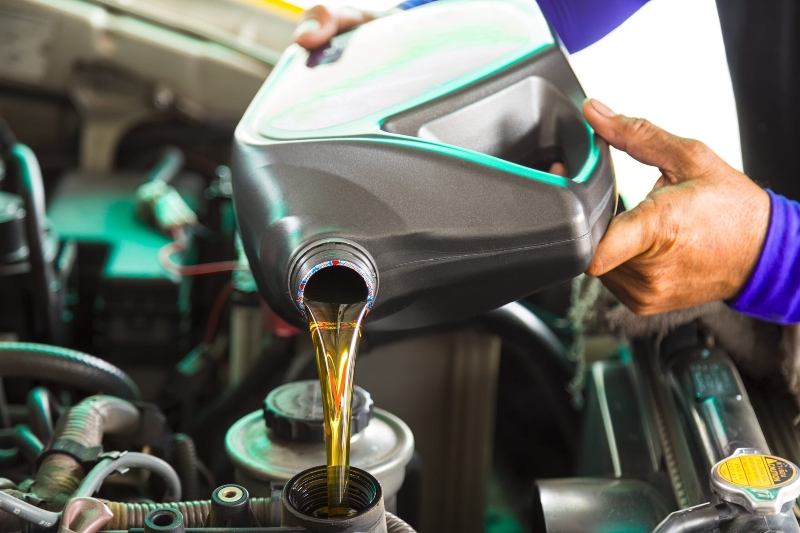
If you have a gas engine, you’ll change the oil in your RV on the same schedule as a typical passenger vehicle. You’ll generally want to change your oil every 3,000 to 5,000 miles, or every six months, whichever comes first.
If your RV is older or has high mileage, you’ll need to change your oil more frequently.
Oil Changes for a Diesel Engine
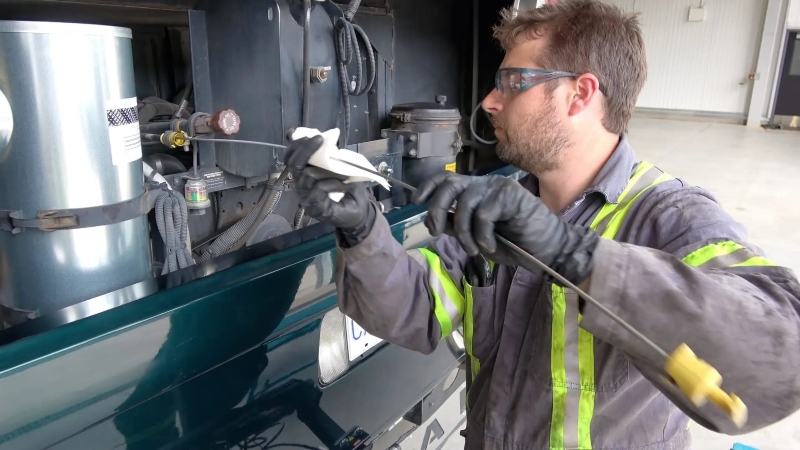
Diesel engine motorhomes need an RV oil change slightly less frequently than their gas engine counterparts. Change the oil in RVs with diesel engines every 5,000 to 10,000 miles, or at least once a year.
An older or higher mileage RV will need more frequent oil changes. Likewise, you’ll also need frequent changes if the RV is primarily driven in the city rather than on the highway.
Oil Changes for Camper Vans
Camper vans are essentially modified passenger vehicles, so RV vehicle maintenance is similar. For example, you should change the oil in a Mercedes-Benz Sprinter every 3,000 to 5,000 miles for a gas engine and every 7,500 to 10,000 miles for a diesel engine.
But for Sprinters, in particular, Mercedes-Benz does recommend you change the oil in your RV at a Mercedes-Benz specialist.
Should You Use Synthetic Oil?
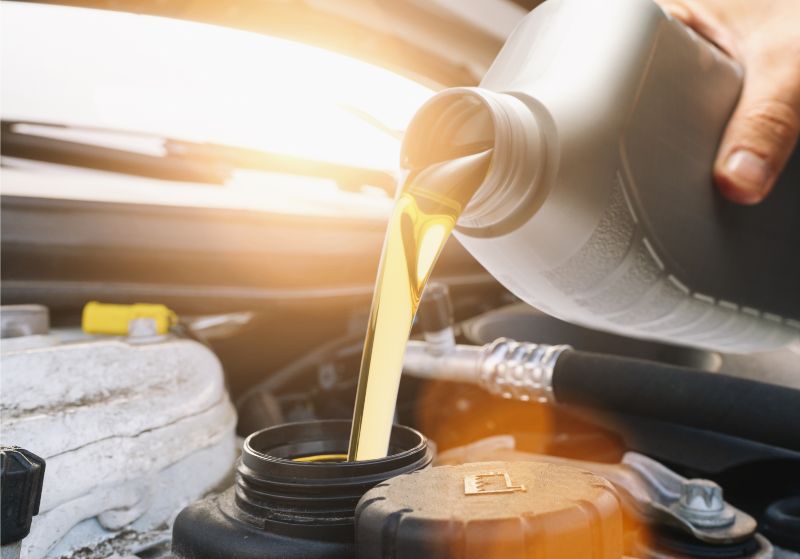
Synthetic oil offers several advantages over conventional oil:
- It lasts longer, meaning you can change the oil in your RV less frequently
- Gives greater protection against wear and tear
- Withstands higher temperatures to better protect your engine for longer
The downside is that synthetic oil is also significantly more expensive than conventional. On average, synthetic RV oil changes are almost double the cost of conventional versions.
However, that extra cost could save you money in the long run by better protecting your engine. So overall, the decision between synthetic or conventional oil comes down to if you think the extra cost is worth it. In some cases, using synthetic oil is required to preserve your warranty.
Where Can I Find an RV Oil Change Near Me?
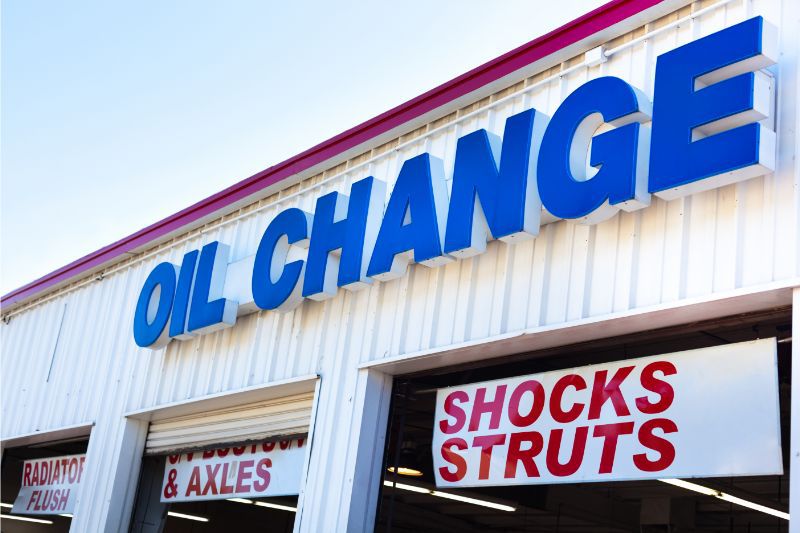
RVs are bigger than most vehicles on the road, so you’ll need to get your RV oil change done somewhere that can accommodate your vehicle.
Finding somewhere to change your oil won’t be hard if you have a smaller RV. But finding an RV oil change service center will be more challenging if you’re driving a big Class A. It can be helpful to call around to mechanic’s shops, dealerships, and places like Camping World to find an RV oil change location near you.
Mobile Mechanics Can Change Oil in RVs on Location

A mobile mechanic is one of the most convenient ways to change the oil in your RV. Mobile RV mechanics come to you wherever you are, so you don’t have to worry about finding a place to accommodate your vehicle.
There are a variety of platforms for finding mobile mechanics near you like:
Another option is finding certified RV technicians near you via the RV Technician Association of America’s website.
Valvoline is Adding RV Oil Changes to Its Service Centers
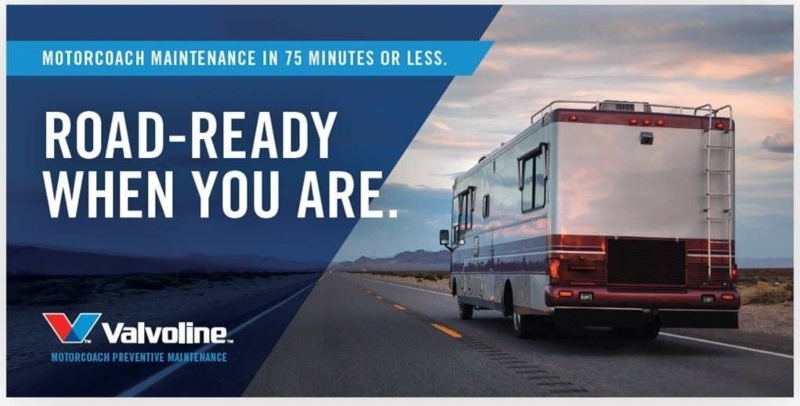
If you’re in Lexington, Kentucky, Valvoline recently opened its first of many RV and heavy-duty fleet services to their oil change service center. Check out the August 22 edition of RV Camping Magazine to learn more.
How Much Does an RV Oil Change Cost?

The cost to change the oil in your RV will depend on 3 things:
- What kind of RV you’re driving
- The type of engine the RV has
- What kind of oil you use
For a smaller RV with a gas engine using conventional oil, an oil change could come in under $100. However, an RV oil change will typically cost a few hundred dollars for a luxury diesel motorhome. Prices increase with synthetic oil or a more expensive shop such as a dealership. Gas Class A and Class C motorcoaches could spend around $200.
Should You DIY Your RV Oil Change? A Step-By-Step Guide

It’s 100% possible to DIY your RV oil change, which can save you money.
To change your RV oil, you’ll need a few tools: an oil wrench, oil drain pans, a funnel, new oil, and a new oil filter. You’ll also want rags, paper towels, and PPEs to protect your eyes and hands.
1. Raise Your Motorhome Up With RV Leveling Blocks
Most RVs have enough ground clearance to get underneath easily. But if you can’t get under your RV, you can raise the RV using ramps or jacks with safety stands. Don’t use your stabilizer jacks since they’re not made to hold your motorhome’s weight.
2. Run the Engine to Drain the Oil
Run the engine for about five minutes so the oil drains better. When the oil is hot, it thins out and loosens more dirt.
3. Drain the Oil Pan
With the drain pan beneath the drain plug, loosen the drain plug using a wrench and socket. Then, unscrew the drain plug by hand and set it aside.
4. Change the Oil Filter
Remove the oil filter and pour the used oil into your drain pan. Once all the oil has drained, set aside the pan – you’ll need to find where to properly dispose of your used oil. Install the new oil filter and replace the drain plug.
5. Add the New Oil and Double Check the Dipstick
Open the hood and fill the engine with fresh oil; check the dipstick every few quarts to check your progress.
6. Turn the Engine Back on for the Last Quart
When you’re on your last quart, turn the engine back on and let the new oil cycle through the engine for a minute or two. Pull the dipstick, wipe it off, and get a new measurement. If the new oil level is below the full mark, add more. Repeat this “double-dip” measurement and add more oil until you’ve reached the full line.
How Many Quarts of Oil Does an RV Take?
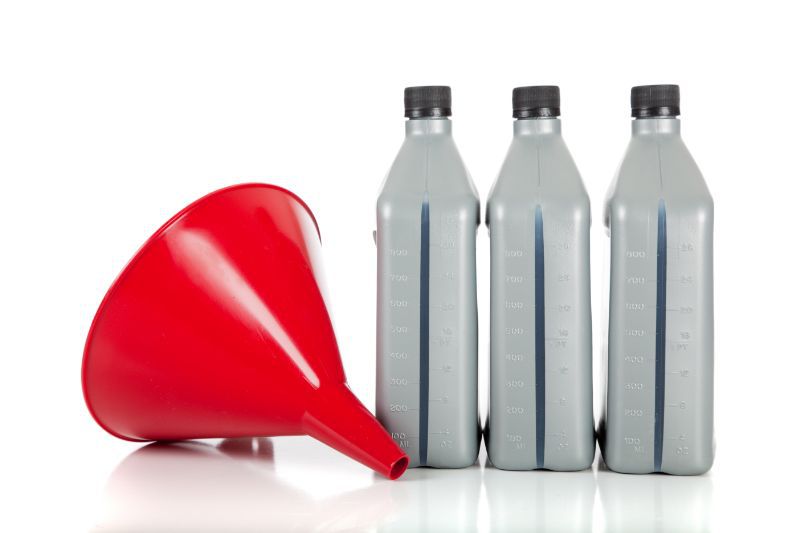
The amount of oil your RV needs depends heavily on what RV you drive and its engine. Your owner’s manual will tell you the exact amount of oil your RV needs.
Some RVs might take as few as 8 quarts of oil. However, most RVs take from 12 quarts to 28 quarts of oil.
5 Other Tune-Ups You Should Do While Changing Your RV Oil
Changing the oil in your RV is an excellent opportunity to do other routine maintenance. Here are 5 other tune-ups you should do when you do an RV oil change.
1. Air Filter
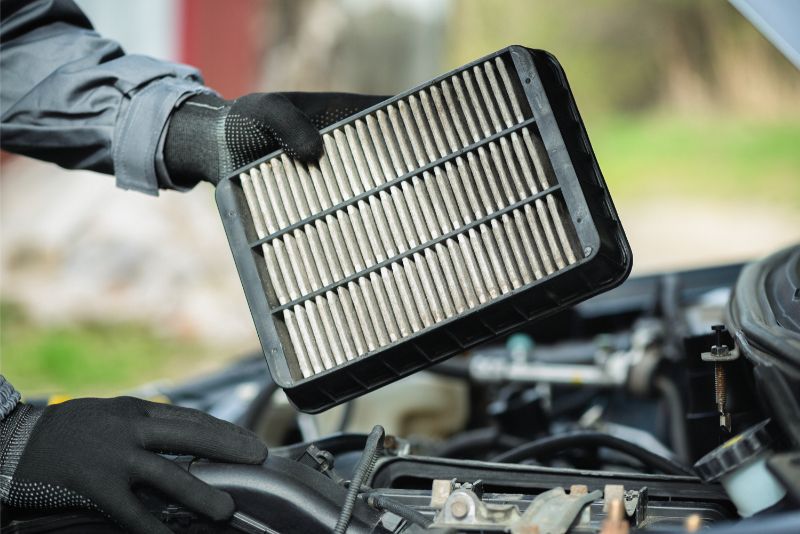
Air filters keep dirt and debris out of your engine and running smoothly. But a dirty or clogged air filter prevents proper airflow, forcing your engine to work harder. That reduces fuel economy, acceleration, and towing power, leading to engine overheating.
2. Spark Plugs and Wires
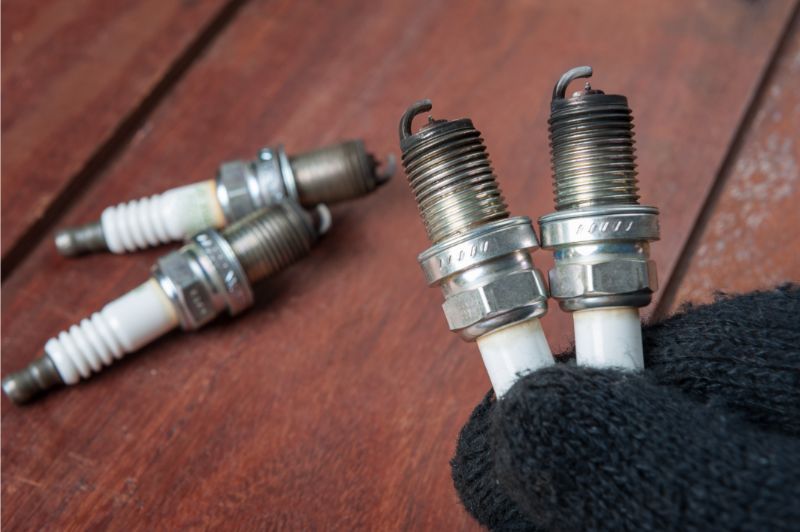
Your RV spark plugs create the spark that ignites the fuel in a gas engine and is essential to the operation of your engine. Spark plugs and their wires don’t need to be replaced frequently, but you should still check them when doing a tune-up.
Keep in mind that if your RV has a diesel engine, it doesn’t have spark plugs.
3. Top Off Other Fluids
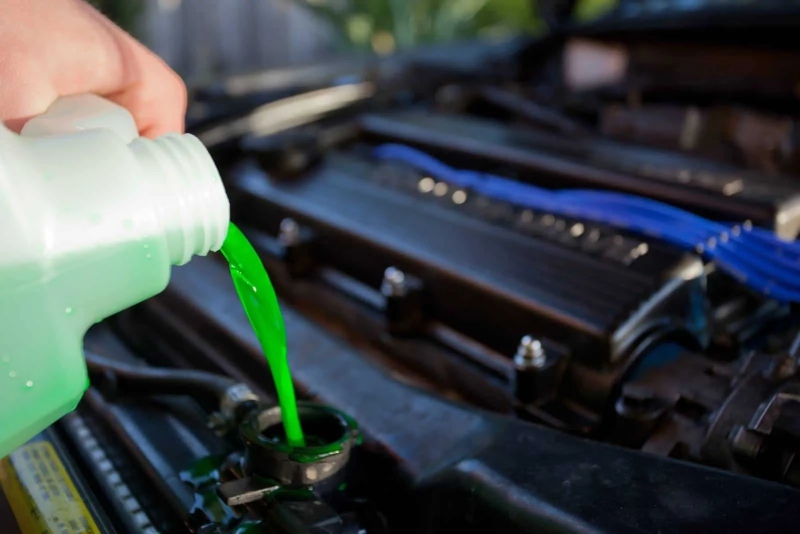
There are a variety of fluids in your vehicle that should be topped off regularly:
- Brake Fluid
- Dashboard A/C Refrigerant
- Power Jack Fluid
- Power Steering Fluid
- Radiator fluid
- Transmission Fluid
- Windshield wiper fluid
You’ll also need to top off your engine oil between oil changes.
In a pinch, all-purpose transmission fluid is a substitute for power jack, power steering, and brake fluid. Water can substitute radiator fluid, but get your radiator fixed as soon as you can.
4. Transmission Fluid Checks
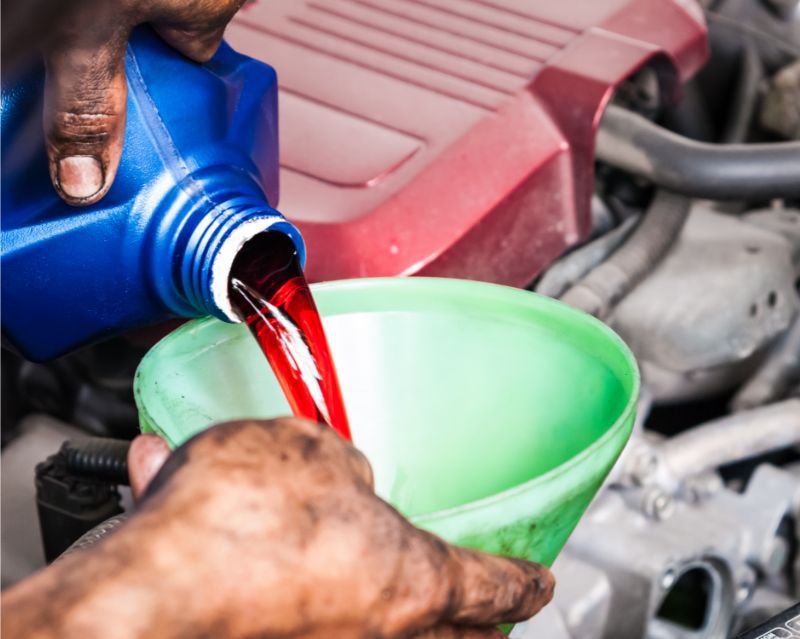
Your transmission fluid lubricates the parts of your RV’s transmission. Like oil, the transmission fluid reservoir is in the engine compartment and checked with a dipstick. In addition to checking the fluid level, you should also check the color – brownish-red or darker fluid indicates you need a change.
Keep in mind that some vehicles have “sealed-for-life” transmissions, which don’t have an accessible reservoir and never need to be topped off.
5. Check the Belts
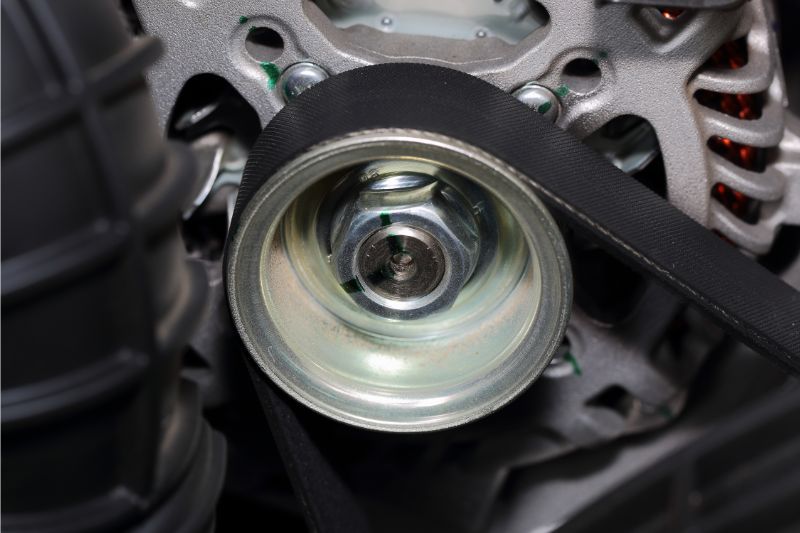
Over time, the belts in your engine are degraded by several factors like fluctuating temperatures, damage from engine fluids, and general wear and tear. When you do an RV tune-up, you should always check your belts.
Look for cracks, splits, and fraying along any belts in the engine. You should also check for glazing, which is when the belt takes on a smooth, glossy texture. Glazed belts are prone to slipping, overheating, and cracking.
Why It’s Essential to Change Your RV Oil Regularly
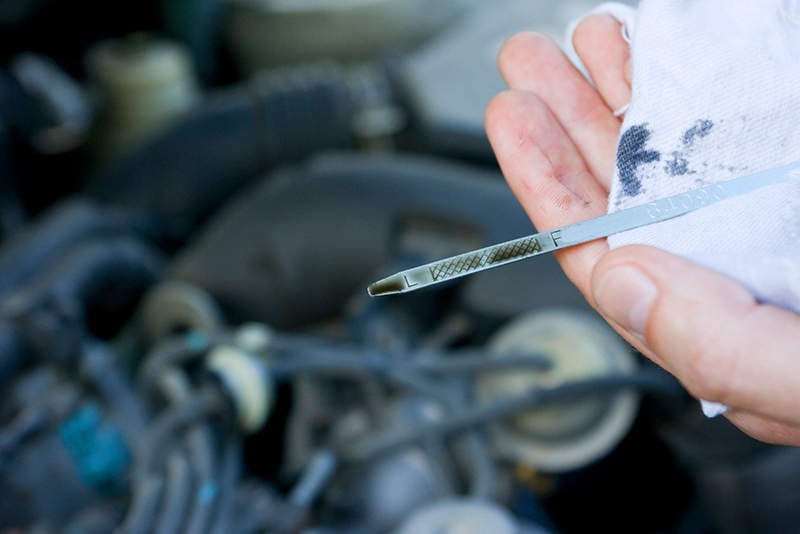
Regularly changing the oil in your RV is essential to ensure proper engine function. If you don’t, your engine oil will slowly solidify into sludge and stop properly lubricating the engine. Without proper lubrication, your engine will perform worse and worse until it finally fails completely.
Be sure to change your oil regularly, every 3,000 to 5,000 miles, or as often as your owner’s manual recommends.
1. Where Do You Wash a Class A RV?
2. 10 RV Toolkit Essentials for Under $10
3. How to Repair Cracked RV Graphic Decals
4. 8 Most Common RV Problems You Can Fix Yourself
5. How to Prevent RV Tires from Dry Rotting
6. 7 Tips for Saving Money on Mobile RV Repairs
About the Author
Jennifer and Kendall are avid RVers and part-time van lifers who share their years of experience both as full-time RVers and nomads through writing.
Jenn and Kendall have explored Canada, the USA, and Mexico while RVing and living full-time in all 3 countries.
They have been fortunate to work not only as part of the RVBlogger team but also with RVLife, DIY RV, Camper Report, RV Magazine, Rootless Living, Vanlifers, and more.
They have also shared their RV experience through DashboardDrifters.com and are the founders of RVSpotDrop, a web service for full-time RVers.


